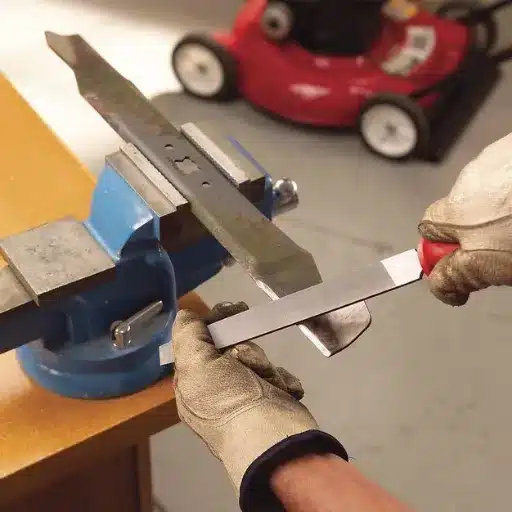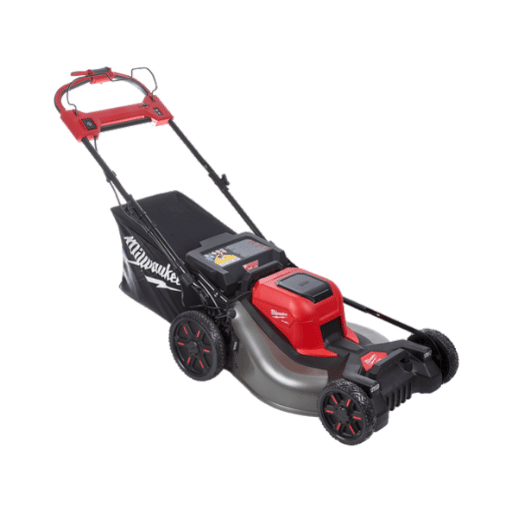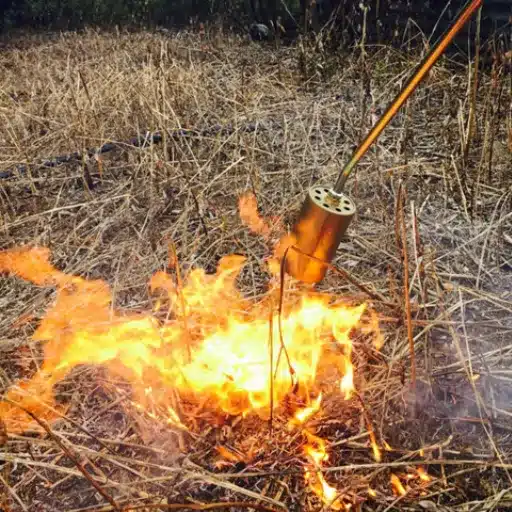Benefits of Riding Lawn Mowers

Here are the major benefits riding lawn mowers have to offer that make them one of the best options for efficient lawn care of large yards:
- Time Savings: Riding mowers with powerful engines and broad cutting decks cover much more ground in less time than any push mower.
- Ease of Use: Designed for comfortable and convenient operation, riding mowers demand very little physical effort, making lawn work less punishing.
- Versatility: Many come equipped with supplementary features or attachments like bagging systems, mulchers, or even snow plows, increasing their usefulness throughout the year.
- Consistency: With a riding mower, your lawn gets perfectly clean, consistent cuts, and easy maintenance ensures it looks professional every time.
Modern Innovations in Lawn Care
Efficiency in Lawn Care
Technological advancements have significantly made lawn care easier and simpler. Modern mowing machines feature:
- GPS Navigation: Advanced guidance systems that combine precision cutting with time-saving processes
- Smart Mapping: Automated systems that map your yard’s layout to determine optimal mowing paths
- Electric Hybrid Options: Energy-saving models that can cut emissions by at least 50%
- App Connectivity: Smart controls allowing real-time tracking of maintenance schedules and performance
Comfort and Ease of Use
Modern lawn machines prioritize user comfort with:
- Adjustable seats and padded handholds
- Vibration-damping systems for reduced body strain
- Lightweight materials for easier maneuverability
- Push-button starts eliminating pull-start physical exertion
- Semi-silent technology reducing noise levels by 50%
Time-Saving Advantages
Today’s motorized lawn-care implements offer significant efficiency improvements:
- Robotic Mowers: Save homeowners 2-3 hours per week on average
- Advanced Cutting Decks: Reduce mowing time by approximately 30% compared to traditional models
- Smart Systems: Mobile app scheduling and monitoring reduces manual effort by over 40%
How to Choose the Right Riding Lawn Mower

Assessing Your Lawn Size and Terrain
| Lawn Size | Recommended Mower Type | Key Features |
|---|---|---|
| Under 0.5 acres | Push or Electric Corded | Easy operation, economical |
| 0.5 – 1 acre | Self-Propelled or Battery | Adequate runtime, manageable size |
| Over 1 acre | Riding or Zero-Turn | Time and effort efficiency |
Terrain Considerations:
- Flat, even lawns: Standard mowers with basic power options
- Hilly or uneven terrain: Mowers with durable engines and strong traction control
- Complex landscaping: Models with excellent maneuverability and tight turning radii
Understanding Different Types: Zero Turn vs. Lawn Tractor
| Feature | Zero-Turn | Lawn Tractor |
|---|---|---|
| Speed | Faster (8-10 mph) | Slower (3-5 mph) |
| Maneuverability | Tight turns | Wider turns |
| Best Terrain | Flat, smooth | Hilly, uneven |
| Versatility | Mowing only | Multi-purpose |
| Learning Curve | Moderate | Easy to use |
| Attachments | Limited | Multiple options |
| Cut Quality | Precise | Good |
| Best Use | Large, flat lawns | Mixed-use, hills |
Key Features to Consider
1. Transmission Types
- Manual Transmission: Multiple set speeds with manual shifting – ideal for those wanting greater control
- Automatic Transmission: Smooth speed adjustments with minimal effort, similar to car systems
- Hydrostatic Transmission: Premium option using fluid power transfer for superior control and smoother rides
2. Deck Size
| Deck Size | Best For | Advantages |
|---|---|---|
| 30-42 inches | Under 0.5 acres | Excellent maneuverability, tight spaces |
| 42-54 inches | 0.5-2 acres | Balance of coverage and navigation |
| 54+ inches | Over 2 acres | Quick coverage of vast areas |
3. Engine Power and Performance
- 15-20 HP: Sufficient for standard residential lawns
- 20+ HP or 540+ cc: Recommended for larger lawns, hilly terrain, or thick grass
4. Additional Important Features
- Cutting Height Adjustments: Multiple positions (1-4 inches) for different grass types
- Durability: Steel mowing decks, reinforced frames, corrosion-resistant coatings
- Modern Amenities:
- Mulching and bagging systems
- LED headlights for low-light conditions
- Ergonomic seat designs and vibration control
Popular Brands and Models

Leading Manufacturers
- John Deere: Renowned for longevity and innovation (E120, X350 models)
- Husqvarna: Powerful performance and reliability (TS 354XD)
- Cub Cadet: High maneuverability and precision (XT1 Enduro Series)
- Troy-Bilt: Economical options for regular care (Pony series)
- Ryobi: Electric pioneers with minimal maintenance (RY48130)
Spotlight: Toro Riding Mowers
Toro riding mowers feature:
- TimeCutter SS4225: 42-inch deck with 22.5 HP motor and Smart Speed Control
- Titan Series: Commercial-grade strength with up to 60-inch decks
- MyRIDE® Suspension: Reduces vibrations by 50% for operator comfort
- Eco-Friendly Design: Precision-cut blades reduce fuel consumption and emissions
Spotlight: John Deere Lawn Tractors
John Deere offers premium features including:
- X300 Select Series: Kawasaki V-twin engines for high torque and steady power
- MulchControl™ System: Switch between mulching and side-discharge options
- X500 Series: Welded steel frames with excellent turning ability
- Green Standards: Fuel-efficient engines with low-emission technologies
Maintenance and Care

Regular Maintenance Schedule
| Task | Frequency | Details |
|---|---|---|
| Clean Debris | After Each Use | Remove grass clippings and debris |
| Oil Change | Every 50 hours/Yearly | Use high-quality engine oil |
| Blade Sharpening | Every 20-25 hours | Sharp blades ensure clean cuts |
| Air Filter | Monthly/50 hours | Clean or replace as needed |
| Tire Pressure | Monthly | Check and inflate properly |
| Lubrication | Every 3 months | Grease all moving parts |
| Fuel System | Every 30 days | Use fresh fuel with stabilizer |
| Battery Check | Monthly | Charge and clean terminals |
| Spark Plugs | Annually/100 hours | Replace for reliable starts |
Common Issues and Troubleshooting
| Problem | Possible Causes | Solutions |
|---|---|---|
| Engine Won’t Start | No fuel, clogged air filter, faulty spark plug | Check fuel, clean/replace filter, inspect spark plug |
| Uneven Cutting | Dull blade, improper tire pressure, deck misalignment | Sharpen blade, check tire pressure, adjust deck |
| Excessive Vibration | Loose/damaged blade, worn pulleys, debris | Inspect blade, check pulleys, remove debris |
| Poor Grass Discharge | Clogged chute, dull blade, wet grass | Clear blockages, sharpen blade, avoid wet conditions |
| Battery Not Charging | Faulty wiring, weak battery, bad alternator | Check connections, replace battery, test alternator |
Storage and Winter Preparation
- Clean Thoroughly: Remove all grass clippings, dirt, and debris
- Fuel Treatment: Either drain fuel tank or add stabilizer
- Oil Service: Change engine oil and oil filter
- Air Filter: Check, clean, or replace as needed
- Battery Care: Remove and store in temperature-controlled environment
- Proper Storage: Store in dry, covered area with protective cover
Frequently Asked Questions
What is a zero turn riding mower?
A zero turn riding mower features a unique turning radius that allows it to pivot on its own axis, making it highly maneuverable and ideal for navigating around obstacles and making sharp turns.
What are the benefits of electric riding lawn mowers?
Electric riding lawn mowers offer several advantages: they’re quieter, produce no emissions, require less maintenance, and often feature cordless capabilities for greater convenience.
How do zero-turn lawn mowers compare to garden tractors?
Zero-turn mowers are designed for speed and maneuverability on residential lawns, while garden tractors are built for heavier tasks like towing attachments and handling larger areas.
What type of terrain is best for zero-turn mowers?
Zero-turn mowers are most effective on flat or gently sloping terrain, excelling in residential settings with well-maintained lawns where obstacles require frequent maneuvering.
What’s the average price range for zero-turn riding mowers?
Zero-turn riding mowers range from around $2,500 for entry-level models to upwards of $10,000 for commercial-grade machines, depending on brand, features, and deck size.
Reference Sources
-
Injuries Associated with the Use of Riding Mowers in the United States, 2002-2007
Published on ScienceDirect, this article analyzes injuries related to riding lawn mowers and discusses safety awareness.
Read more on ScienceDirect -
Ride-On Lawnmowers: The Hazards of Overturning
This study, available on OnePetro, explores the risks of overturning incidents with ride-on lawnmowers.
Read more on OnePetro -
Lawnmower Injuries in Children: A 10-Year Experience
Published on Springer, this article examines the impact of lawnmower-related injuries, including those involving riding mowers.
Read more on Springer









